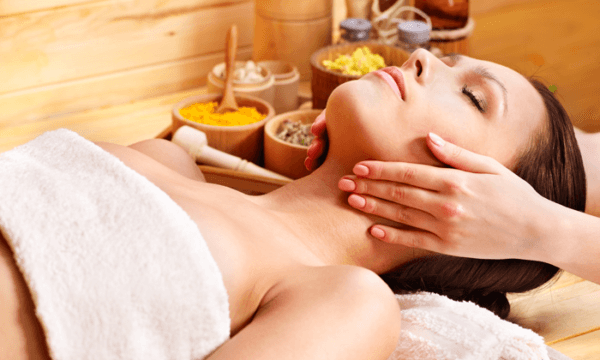Ayurveda, or “the science of life” is primarily about striking a balance, and empowering your internal environment (the body and mind) to work harmoniously with their external environment. The ancient science highly advocates that living in sync with the seasons is one of the best ways to help support health and well being, helping to balance the immune system, digestive fire, and our state of Doshas.
Just as each person has a predominant dosha, different daily time intervals and different seasons are also governed by a particular Dosha.
For many, the spring season is also linked with colds, congestion, hay fever, and allergies. A seasonal Ayurvedic routine can help you to overcome the challenges you face during spring, while promoting optimal health so that you can truly celebrate the gifts this season has to offer.
Spring is ruled by the kapha dosha, whose qualities are heavy, cool, soft, dense, stable, solid, and cloudy. To adjust for the season, consider the following practices:

Wake with the sunrise, before 7am
Making the most of earlier mornings, spring vitality and energy. There is something magical about being able to wake up with the sunrise. It is the purest part of the day. The rest of nature is beginning to sing. The mind space is clear. It allows us to experience the fullness of the day.
Make your first drink of the day warm and spicy
To gently stimulate and support digestion. Enjoying a warming drink can be a great way to relax, as long as you avoid those packed with sugar and fat.
Get moving
When kapha is dominant in the day, the muscles are strongest between 6:00 and 10:00 am. Get outside for a brisk walk or do some vigorous yoga to melt away excess kapha. Kapalabhati pranayama is a great way to stoke the fires of digestion.

Practice self-massage
Self-massage, just as its name suggests, is the act of massaging yourself. However, it is important to note that performing abhyanga on yourself is a more involved process than simply slathering some oil on your neck or back for a few minutes. (For something to address a specific muscle or joint in particular, you might consider applying Muscle Balm or Joint Balm a few times a day in addition to your abhyanga practice.)
Ayurveda recommends spending a minimum of fifteen minutes on self-massage each time you practice it, devoting love and attention to each of the tissue layers as you nourish them with a warm Ayurvedic oil. Vigorous rubbing of the skin with a sponge also stimulates the movement of fluids through the body, promoting detoxification in the spring. As an extra treat, visit a sauna to dry out all the moisture accumulated in winter.
Try a daily yoga routine
Practice sequences that combine the elements of air and fire that Ayurveda says you need to find balance, strength and vitality in spring. Enjoy fire pose, core strengthening, deep lunges and balancing challenges. You\’ll generate lots of radiant heat and energy in your body, burning off any fatigue and getting you fired up for the season ahead Plus, breathe deeply into beautiful back bends, balances and side body openings to feel uplifted, spacious and revitalized.
Avoid concentrated sweet, sour and salty flavors
Concentrated sweet, sour and salty flavors are considered heavy and damp. Reduce chilled and refrigerated foods that are brimming with cold and excess moisture that further aggravate kapha.

Eat lighter foods
In the winter months, we naturally gravitate toward sweet, sour, and salty foods to mitigate the dry, light qualities of the cold season. This can cause kapha accumulation in the physical body. To lighten up, try foods that are pungent, bitter and astringent, including kale, collards, dandelion, spinach, and mustard greens; strawberries, cherries, and blueberries; fresh green peas; and barley, quinoa, and millet.
Allergies
Break out the neti pot to irrigate the sinus cavities and clear out the nasal passages. Use ¼ tsp of salt with purified water, and use half a pot for each nostril. Always end your neti pot routine by massaging a little sesame oil or nasya oil into each nostril. (Do not use a neti pot if you have an active sinus infection; it is for prevention, not treatment.)
Most importantly, allow your body and mind time to adjust to a new spring environment. Try to give yourself enough rest, sleep and exercise, as well as gifting yourself a good nutritious diet and a positive state of mind.
For appointments or more information, please contact us via WhatsApp at 407.617.9016.
We will be happy to assist you



